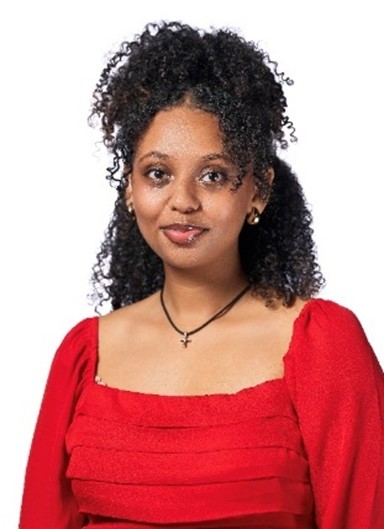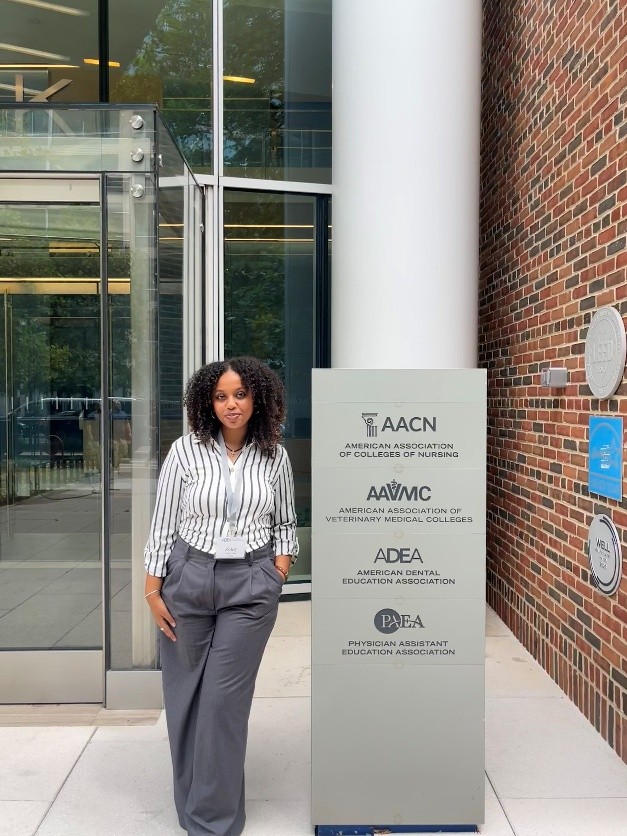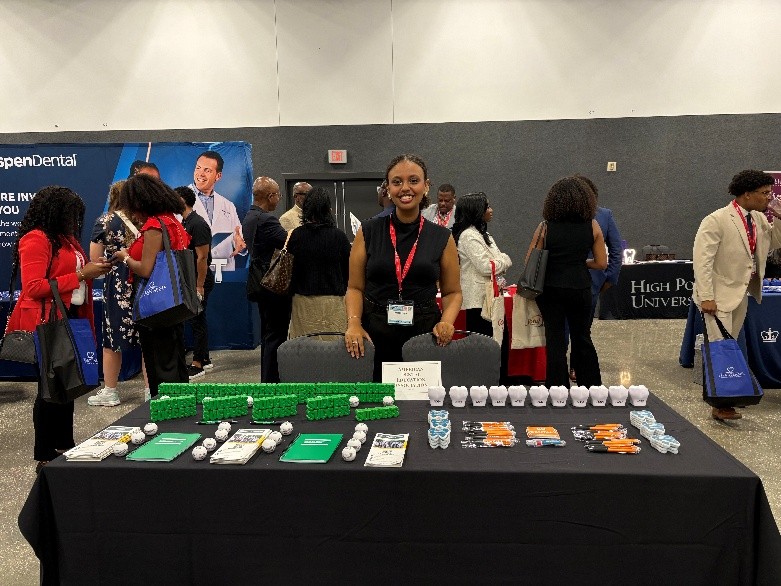
Bulletin of Dental Education Article
Archive
- Bulletin of Dental Education | December 2024, Volume 57, Issue 12
- Bulletin of Dental Education | November 2024, Volume 57, Issue 11
- Bulletin of Dental Education | October 2024, Volume 57, Issue 10
- Bulletin of Dental Education | September 2024, Volume 57, Issue 9
- Bulletin of Dental Education | January 2025, Volume 58, Issue 1
- Bulletin of Dental Education | February 2025, Volume 58, Issue 2
- Bulletin of Dental Education | March 2025, Volume 58, Issue 3
- Bulletin of Dental Education | April 2025, Volume 58, Issue 4
- Bulletin of Dental Education | May 2025, Volume 58, Issue 5
- Bulletin of Dental Education | June 2025, Volume 58, Issue 6
- Bulletin of Dental Education | July 2025, Volume 58, Issue 7
- Bulletin of Dental Education | August 2025, Volume 58, Issue 8
Health Career Connection Summer Internship Reflections: The Connection Between Oral Health and Public Health
Over the years, ADEA has supported Health Career Connection (HCC) by hosting undergraduate students and recent graduates for a 10-week, full-time paid summer internship. HCC partners with over 300 health care, public health, behavioral health and biopharma organizations. Annually, HCC places over 300 interns across the country to provide invaluable exposure, along with opportunities for mentoring and networking, to empower interns to choose and successfully pursue a career in the health professions.

Kidist Tsige, 2025 ADEA Health Career Connection Summer Intern
In the summer of 2025, Kidist Tsige, a rising fourth-year student at Augustana College in Rock Island, IL, began her 10-week internship with the ADEA Department of Access, Success and Impact (ASI).
With majors in Biology and Communication Studies and a minor in Public Health, Ms. Tsige approached the experience eager to explore how oral health promotion and education fit within the broader picture of public health. She hoped the internship would help deepen her understanding of the connections between these areas while gaining hands-on insight into the world of health professions education and factors affecting access to care. In the end, Ms. Tsige had a meaningful journey that challenged her assumptions, built new perspectives and highlighted the importance of integrating oral health into public health work.
Ms. Tsige, who was born and raised in Addis Ababa, Ethiopia, was familiar with the public health disparities that shape under-resourced communities. In her experience, access to health care is often seen as a privilege rather than a right. Preventive care, especially for oral health, is commonly considered a luxury. The connection between the body and the mouth is rarely acknowledged. This disconnect is not always rooted in a lack of awareness, but rather in the reality that oral health care, such as receiving braces or regular cleanings, typically signals financial means.

Before her internship, Ms. Tsige understood dental care through a clinical lens. The broader work of oral health education was new to her, including how ADEA supports educators, students, researchers and leaders in shaping the future of oral health education. Her understanding of this changed significantly over the course of her internship.
ADEA’s mission, “to develop an inclusive, future-ready oral health workforce,” helped Ms. Tsige to recognize oral health as a critical part of overall health. Working on a policy brief about Utah’s community water fluoridation ban allowed her to explore how legislation, access and public misinformation intersect. This experience highlighted the importance of preventive oral health care as a population-level public health intervention.
During her internship, Ms. Tsige had the opportunity to attend various meetings and events, including the 2025 Student National Dental Association Annual Convention and the ADEA Strategic Capacity Building Institute. She also met and connected with several ADEA colleagues, whose perspectives and experiences broadened her understanding of the field of oral health.
One particularly impactful conversation was with Rebecca Stolberg, M.S., RDH, ADEA Vice President of Allied Dental Education and Faculty Development, which completely reshaped Ms. Tsige’s perception of the oral health workforce.
Until that point, Ms. Tsige’s understanding of oral health was narrowly centered on individual care and clinical practice. Learning about the infrastructure, education and system-level roles that support access to care, especially for underserved communities, gave her a new lens through which to view the profession. It not only shifted her perspective on the coordination and collaboration needed for oral health education and delivery but also sparked a deeper interest in how these approaches might be adapted globally. It gave her the opportunity to reflect on what this could look like in communities with limited resources, including those in countries like Ethiopia, where access is inconsistent and public understanding of oral health is minimal.
The social determinants of health are among the first concepts introduced in public health education. Ideas such as access, environment, education and economic stability are often referenced in classrooms, textbooks and case studies. Throughout her internship, Ms. Kidist saw these concepts transition from theory to practice, particularly in the context of education as a public health tool.

Her internship in ADEA ASI clarified how academic preparation shapes the health landscape. It is trained educators who guide students and those students often become professionals who then promote health in communities. It’s a continuous cycle: educators support learners, learners become practitioners and practitioners work to close public health gaps. Without this academic foundation, public awareness and access to care remain limited.
When her internship came to a close, one theme stood out for Ms. Tsige across every conversation, project and reflection write-up: Effective health communication is crucial to oral health education. One of the most important responsibilities for educators is learning how to reach diverse communities in ways that are cognizant of different cultures, uses clear, easy-to-understand language and is responsive to systemic barriers. Misinformation thrives in the absence of thoughtful communication. For this reason, health communication must be intentional, inclusive and rooted in a commitment to equity. Educators are the bridge between science and society.
Courtesy of Kidist Dawit Tsige, 2025 ADEA Health Career Connection Summer Intern
Published on September 10, 2025
